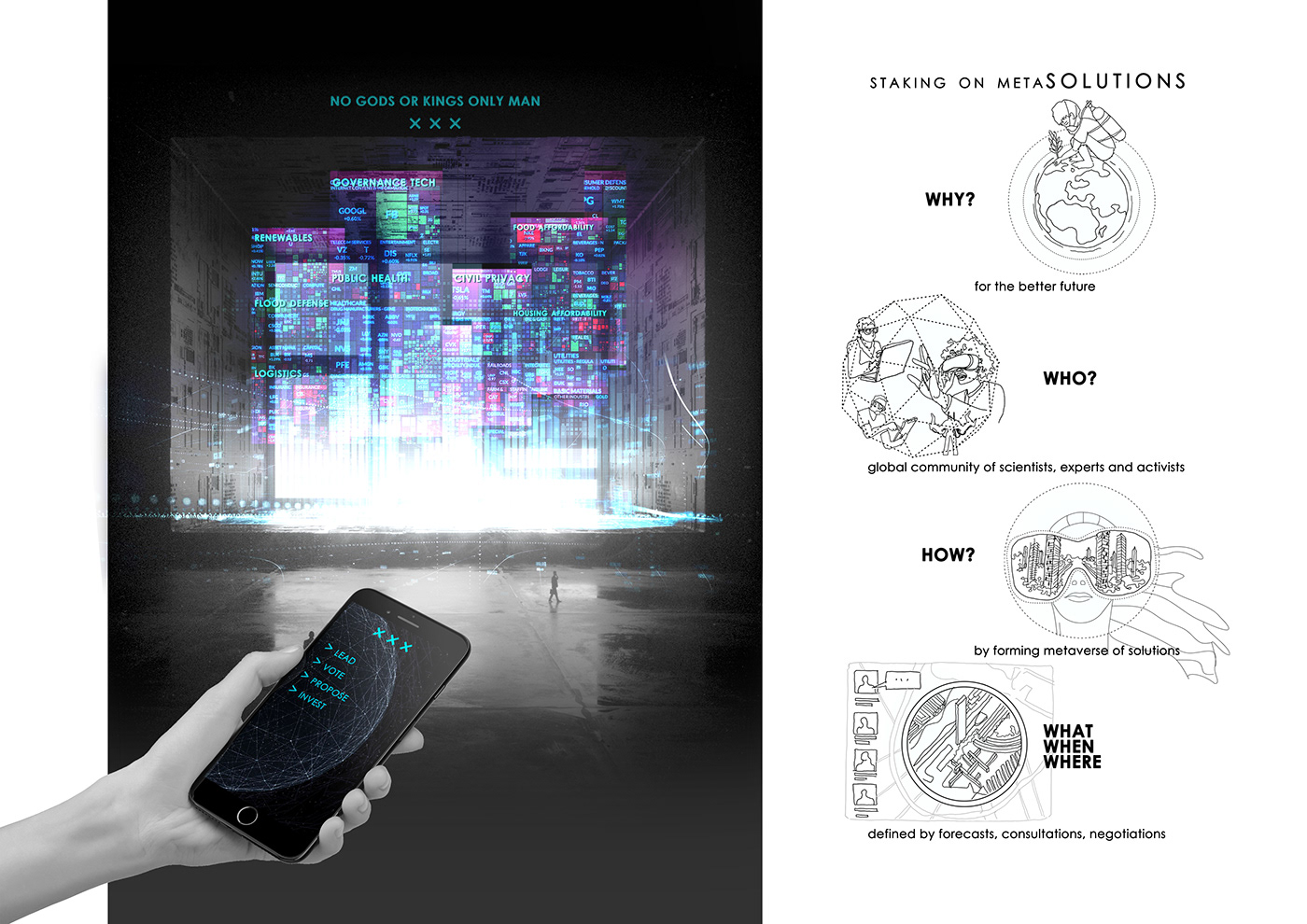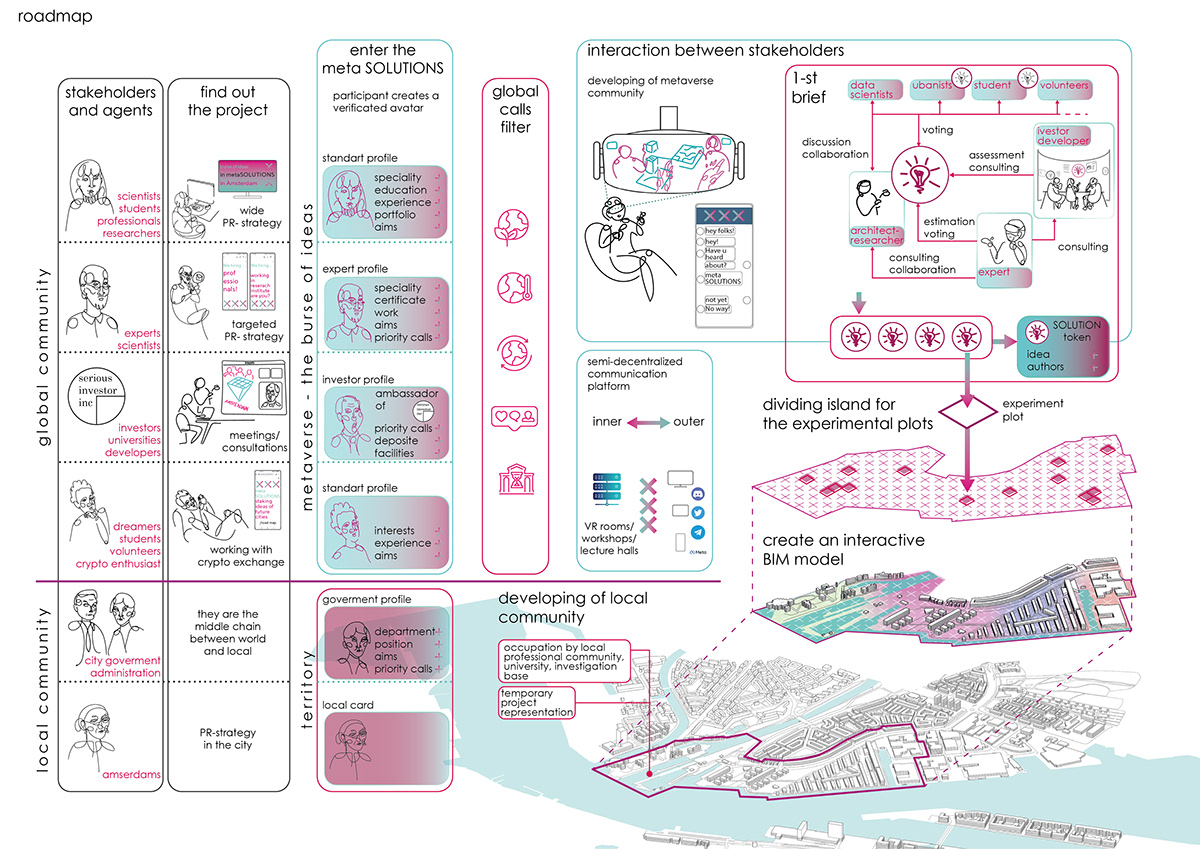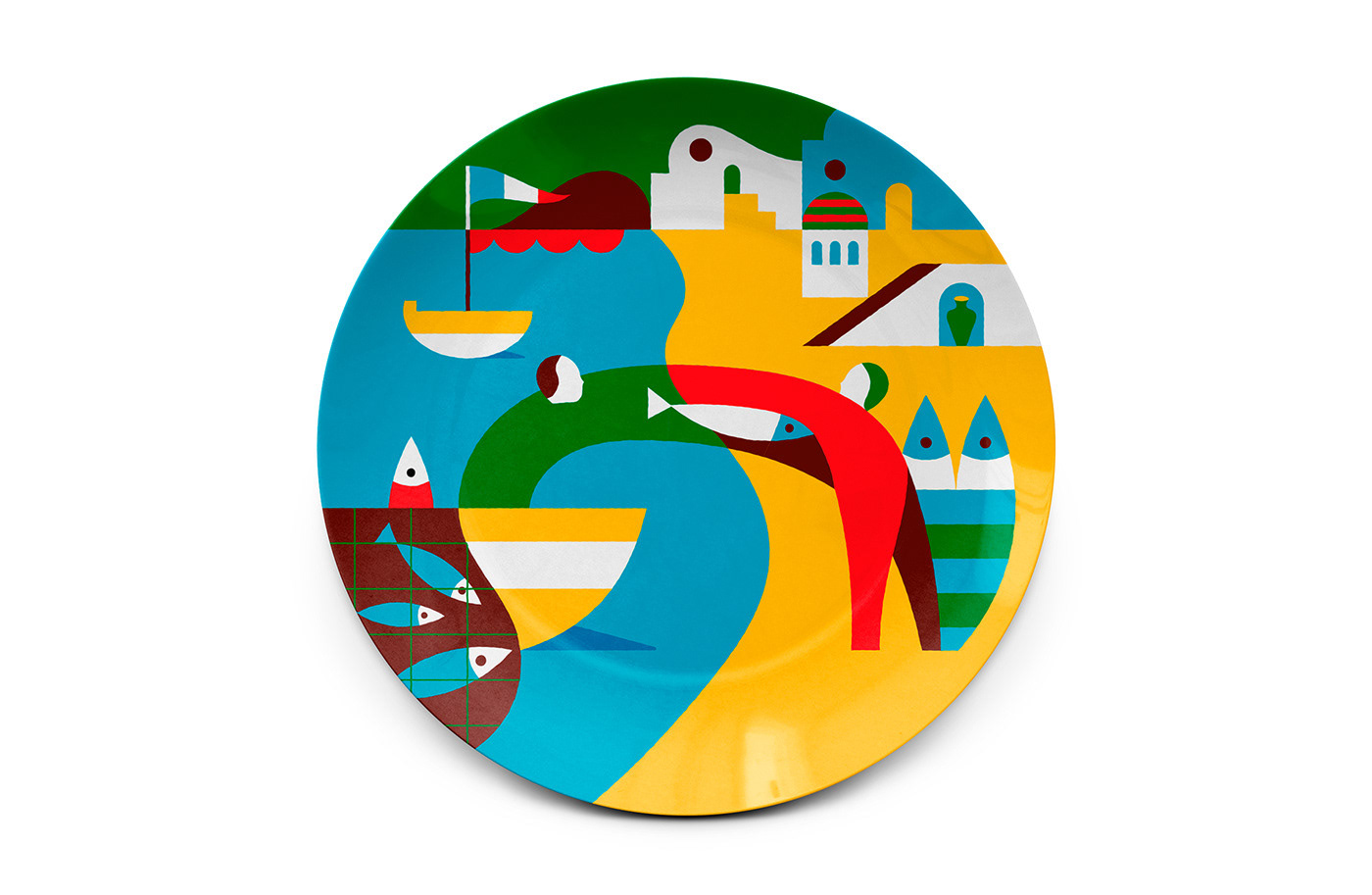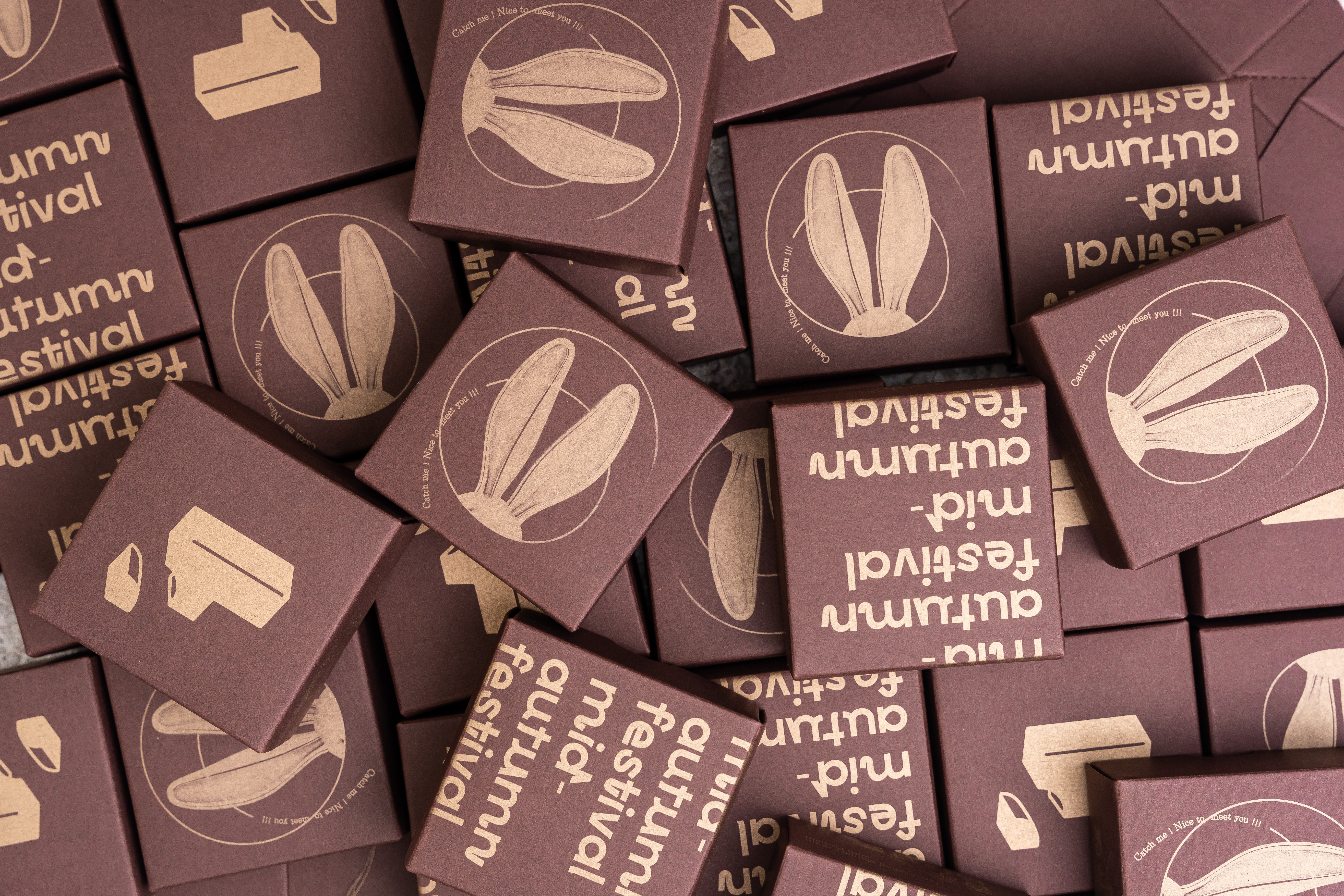Typology: Urban Design / Speculative architecture
Status: Competition, honorable mention
Year: 2022
Location: Amsterdam
Team: Anastasiia Kolomina, Artur Biktashev, Ivan Koloskov, Anastasiia Blinova
Conception for NON ARCHITECTURE AMSTERDAM 2050
You can find more about the competition here
Brief in short:
The Community 2050 Competition will look forward to the future possibilities of community development that can be constructed by innovative urban technology. The site — Amsterdam Ijplein — was framed as a “Socio-cultural Powerhouse”, for its diverse social composition, value in informality and cultural assets.






What does it mean to live in the city now?
Amsterdam has always been an innovative place, a stronghold of modernity. Participating almost in its genes; Amsterdam’s appearance is the result of democratic design. City development connects with a global agenda. There are no differences between locals and nonresidents, individuality is one of the main values of Amsterdam.
The value environment of Amsterdam can be represented as a space of individualists, whose life and interaction with society are conditioned by personal motivation. The territory can develop with the help of a global community, interested people, whose interest is reinforced, among other things, by the opportunity to directly capitalize on their ideas, competence, willingness to help the common cause and be involved. In a sense, this project can become a global incubator of advanced ideas and technologies with a stronghold in the form of a small island in Amsterdam.
Idea - new product. MetaSOLUTIONS - the place where the "idea-realization-evaluation" cycle can be as fast as possible. MetaSOLUTIONS - the place where ideas are always owned by people, at least partially, and a place where people can invest, support, and co-create ideas. The link between idea and author provided by blockchain, if you stake it - you own it and take a profit. Therefore after the 1-st realization cycle of the idea right on an island in the center of Amsterdam, the idea can be spread around the world instantly, without long holding by rights owners.
The project gathers prospective stakeholders, experts and users. They are naturally divided into 2 groups: local (which are in the territory) and global. When they cross paths they have interesting communication mechanism:
Development of the author's idea, trying on the idea in the model.
Firstly it can be justification of the concept, presentation of the project draft. The selection of drafts for the next stage takes place at the first brief within the metaverse community, which by this time exists in the form of chats, discussions, virtual rooms, etc. The authors gather in teams, communicate with experts, communicate with each other. Communication and activity are encouraged, more active users are more likely to get a project in the future.
1st brief: authors submit drafts of their ideas and projects for discussion. Communities of all authors and users select ideas and projects for further development. In parallel, there is a selection by the expert community, which can add missed good projects.
The idea is evaluated for compliance with challenges, innovativeness, practicality, feasibility, and also consider the composition of the authors, their profiles (as an analogue of the portfolio).
Then, those who pass the first brief are allocated "duplicates" of the territory for which they applied. Duplicates are a copy of the physical site of the island, with the all real characteristics and research. This is actually a BIM model of the entire island. Participants are allowed to work only on their plots. On them they make the first iteration of the project according to their draft. Since there can be many iterations for one plot at once, with different topics and authors, then for each plot and topic there is a drop-down list of projects that opens on an interactive divided map-model of the island.
Next comes the 2nd brief, where projects are selected for each plot. This happens in a community center where stakeholders gather: residents, experts, students, investors, developers, scientists, volunteers. After the ideas are approved, they move to the implementation stage. At the same time, projects must meet the following principles: compliance with global challenges, introduction into the urban environment, reversibility. Then the cycle repeats. It's an endless experiment. Good ideas are tested and then distributed around the world to solve global problems.








